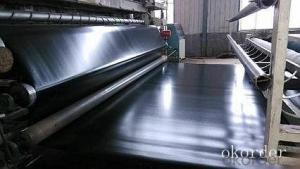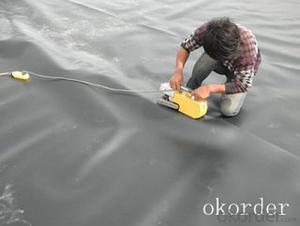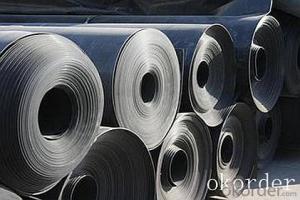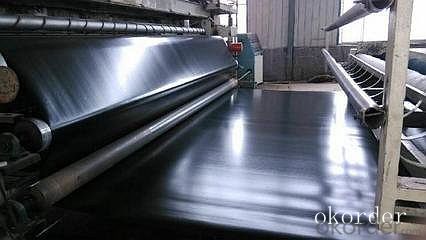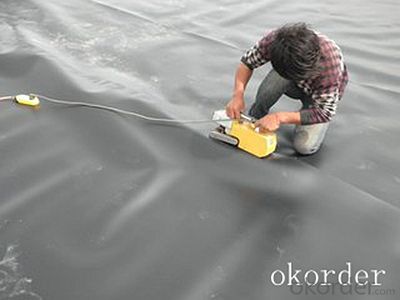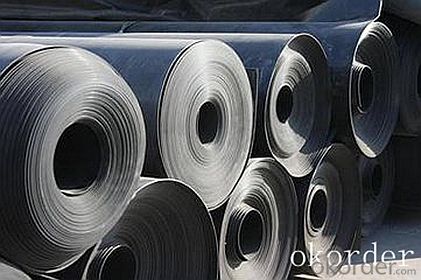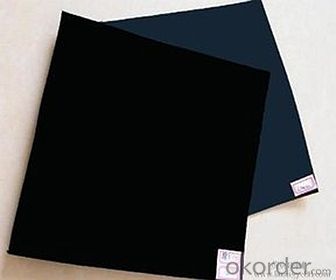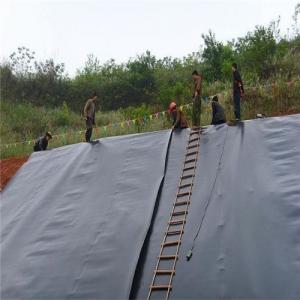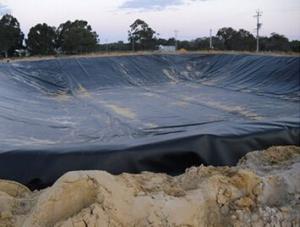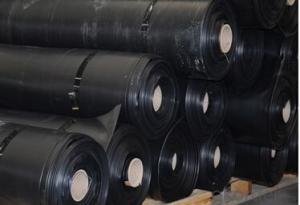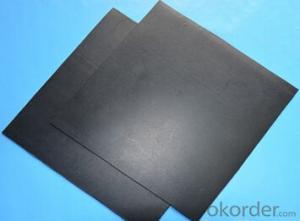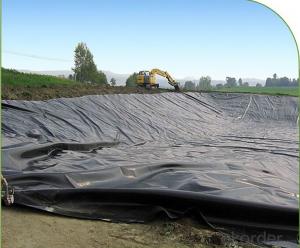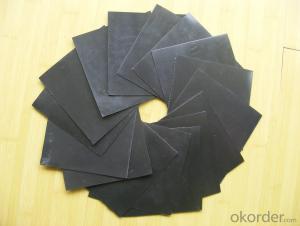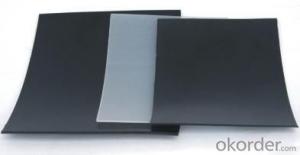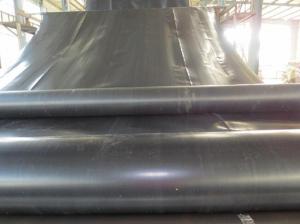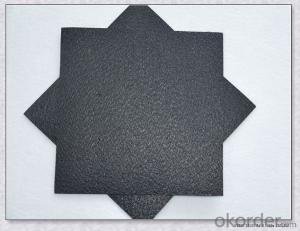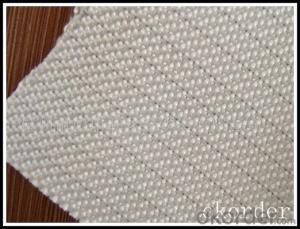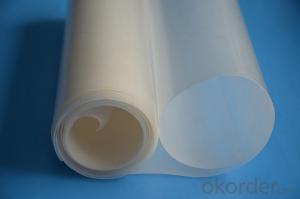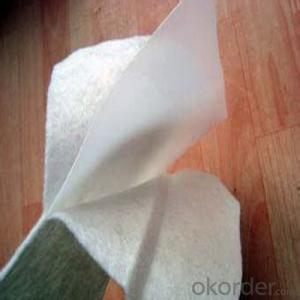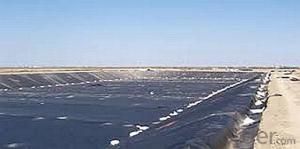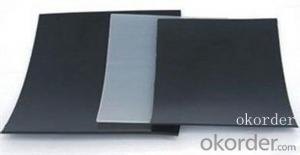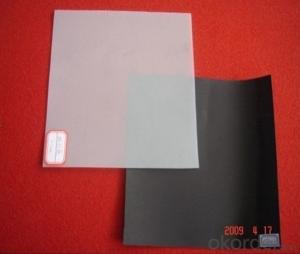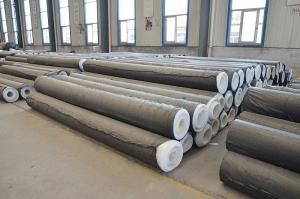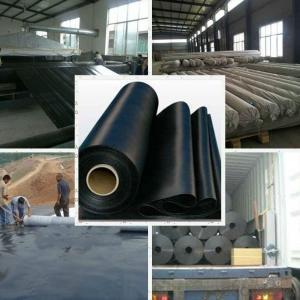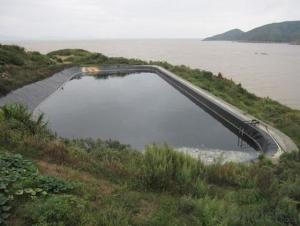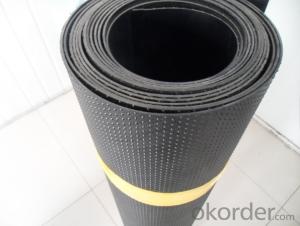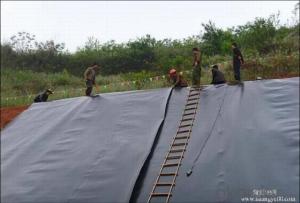Geomembrana Nortene Waterproof Environmental Engineering 2 mm HDPE Geomembrane Roll
- Loading Port:
- China main port
- Payment Terms:
- TT OR LC
- Min Order Qty:
- 1000 m²
- Supply Capability:
- 1000000 m²/month
OKorder Service Pledge
OKorder Financial Service
You Might Also Like
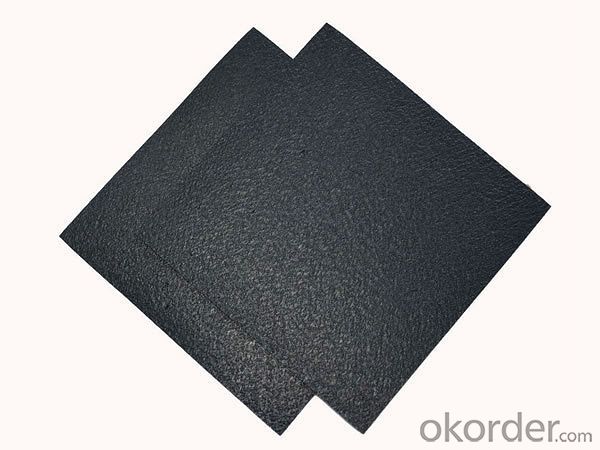
Geomembrane
Composite Geomembrane with impermeable plastic film as a substrate, and non-woven geotextile composite made of impermeable material, which depends on the seepage properties of a impermeable plastic film performance. Is a kind of polymer chemistry flexible material, the proportion of small, extensible stronger ability to adapt to high deformation. Corrosion resistance, low temperature, frost good performance. Have better resistance to erosion, are not afraid of acid, alkali and salt erosion.
Feature:
1. Corrosion resistance, aging resistance, puncture resistance
2. Repairable and recyclable
3. Very low permeability and good flexibility
4. Smooth, UV resistance and no toxic
5. Excellent environmental stress cracking resistance property
6. High tensile strength and elongation
Properties :
It is of excellent physical and hydraulic properties, and especially its advantanges in the tensile strength,longitudinal and lateral strength ratio,uniformity and so on.
Our Service
1.On a regular basis or as per your request,we entrust national testing agencies to conduct quality inspections
2. Strictly in accordance with the ISO9001-2008 international quality system standard,we monitor and manage the whole process throughout production,quality testing,and measurement to ensure product quality
3. For quality-related construction delay or substandard construction(except for damage or losses due to customer’s responsibility or irresistible natural disasters),we have refunding,replacement,and repair services.We will respond to customers’ feedbacks on quality issues within 24 hours.
After-sales service
1.In order to provide customers with comprehensive technical support,we will provide technical and other related information upon request in a timely manner.
2.In required,we will appoint specialized technicians to the construction site to give technical trainings to construction people,and offer technical guidance throughout the whole construction process.
3.For damage due to shipment and delivery,after we receive the complaint,we will check the issure through provided pictures and videos.If our responsibility is confirmed,we wil offer free replacement.
4.When the construction is completed,as your request,our technical staff may participate in the final acceptance.
FAQ:
Q: What kind of payments does jenor support?
A: T/T, L/C, Cash are accepted.
Q: Do you charge for the samples?
A: Accordeing to our company policy, the samples are free, we only charge the freight fee. And we will return the freight fee during the next order.
Q: Can you produce according to customers' design?
A: Sure, we are professional manufacturer, OEM and ODM are both welcome.
Q: Do you have other products?
A: Yes, please check the pictures:
- Q: What are the differences between the geomembrane and geotextile?
- To put it simply, geomembrane is impermeable to water, while geotextile is permeable to water. Geotextile is made of nonwoven fabric, mainly used to consolidated subsoil. Geomembrane is made of high density polyethylene, mainly used for seepage-proofing. Geotextile can be divided into woven geotextile and non-woven geotextile, which has excellent functions like filtration, drainage, separation, reinforcement, seepage-proofing, protection and characteristics like light weight, high tensile strength, good permeability, high temperature resistance,anti-freezing, aging resistance and corrosion resistance. Geomembrane is a kind of polymer chemistry flexible material taking plastic film as seepage-proof substrate, with small proportion, strong extensibility, high?adaptability?to the?deformation, corrosion resistance, low temperature resistance and good anti-frost?property. Geomembrane is mainly used for projects in engineering construction field which have high seepage-proof requirement like seepage-proofing, isolation, enhancement, anti-cracking, reinforcement, water drainage in horizontal plane. "Geotextile is used for anti-filtering while geomembrane is used for seepage-proofing." Geotextile and geomembrane can be used alone and they can also be combined into one to give play to their respective strengths.
- Q: What is the role of geomembranes in industrial wastewater treatment?
- Geomembranes play a crucial role in industrial wastewater treatment by acting as a barrier to prevent the leakage or contamination of wastewater. They are used to line containment ponds, storage tanks, and other structures to effectively contain and manage the wastewater, ensuring it does not seep into the surrounding soil or groundwater. Additionally, geomembranes can also be used in the construction of wastewater treatment plants to separate different treatment stages and prevent the mixing of different types of wastewater. Overall, geomembranes provide an essential protective layer in industrial wastewater treatment infrastructure, helping to safeguard the environment and human health.
- Q: Home color film and the film pvc wallpaper What is the difference?
- Ingredients: Wall membrane: Using natural materials, free of PVC, free of formaldehyde, benzene, toluene and other toxic substances. Wallpaper: Use paper | PVC construction method: Wall membrane: Technology low, easy to glue, white-wall film and adhesive properties, easy mosaic, wallpaper: high requirements, high material loss. Decorative: Wall membrane: Rich in texture, in three-dimensional, the preparation of patterns and colors with any class, you can paint, can change color when recoated. Wallpaper: Surface gloss, colorful patterns. You can not paint. . Can not change the color; repairability: Wall membrane: For multiple brushing renovation, it can be partially repaired. Wallpaper; can not repair, can only be partial or total replacement. Stability: Wall membrane: Do not fade, mildew, non-toxic odor-free, anti-moth. Wallpaper: fade, mildew, shedding, odor, anti moisture not good. Life: Wall membrane: 30 years (can be changed within 8 colors) Wallpaper: 5 years Economy: Wall membrane: Simple construction, low loss, can be repeatedly brushing, long service life. Wallpaper: Parquet, while trimming losses high, short life.
- Q: Is electrothermal membrane electric heating blanket useful?
- It is really easy to use, but now people are afraid of radiation, both electric heating film and electric blanket are sure to emit radiation, so electric furnace dose less harm to human body
- Q: Should geotextile be laid under the geomembrane in the fish or shrimp ponds?
- It is completely unnecessary.
- Q: Which one is better, electrothermal?film or electric?hot?plate
- You should choose according to your need to decide whether to buy electric heating film or electric heating
- Q: Can geomembranes be used for decorative purposes?
- No, geomembranes are primarily used for containment and environmental protection purposes rather than for decorative purposes.
- Q: What do geomembrane 200/ 20/ 20 mean?
- 2 & # 47, ditch; 200, the interjacent plastic film is 0, reservoirs. The total gram weight of this product is 600g / ㎡, which is one of composite geomembranes, identifing that the geotechnical cloth on the top side and the bottom side of this kind composite geo-membrane is 200g & # 47.2mm thick;㎡ around, which is often used in the artificial lake seepage-proofing. Geomembrane and composite geomembrane manufacturers; 0, general watercourse, should be 200 & # 47
- Q: What are the types of geomembranes?
- There are several types of geomembranes, including high-density polyethylene (HDPE), low-density polyethylene (LDPE), polyvinyl chloride (PVC), ethylene propylene diene terpolymer (EPDM), and chlorosulfonated polyethylene (CSPE).
Send your message to us
Geomembrana Nortene Waterproof Environmental Engineering 2 mm HDPE Geomembrane Roll
- Loading Port:
- China main port
- Payment Terms:
- TT OR LC
- Min Order Qty:
- 1000 m²
- Supply Capability:
- 1000000 m²/month
OKorder Service Pledge
OKorder Financial Service
Similar products
Hot products
Hot Searches
Related keywords
